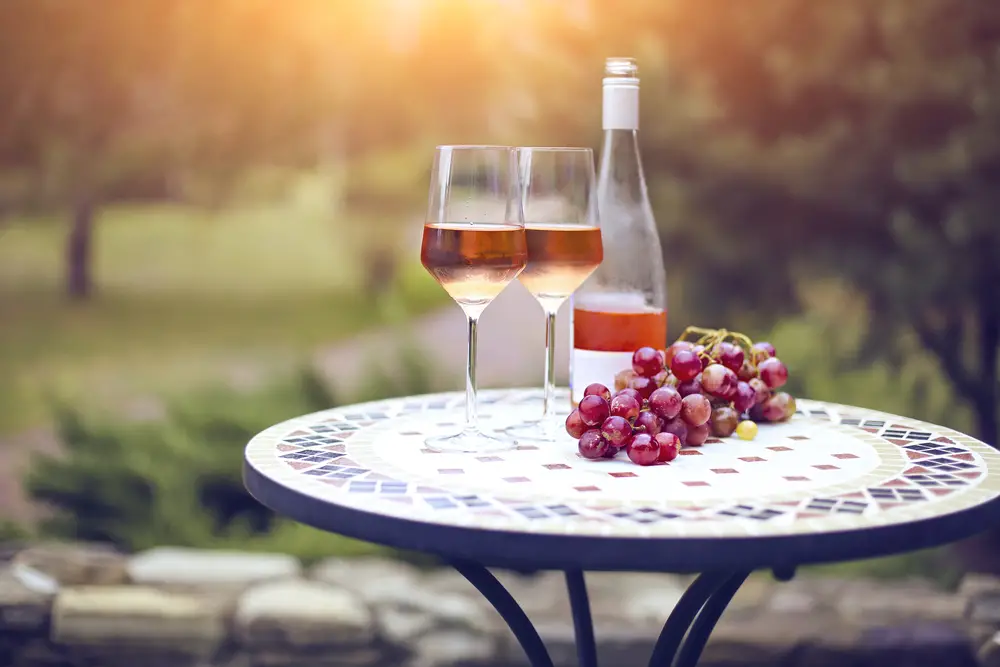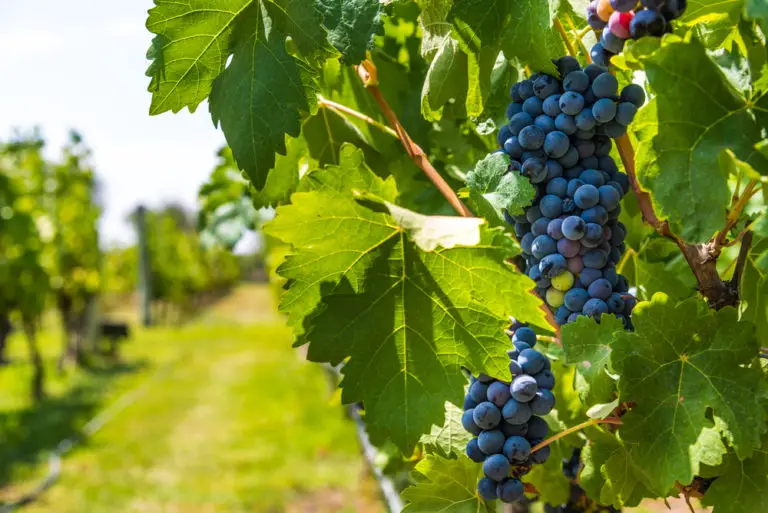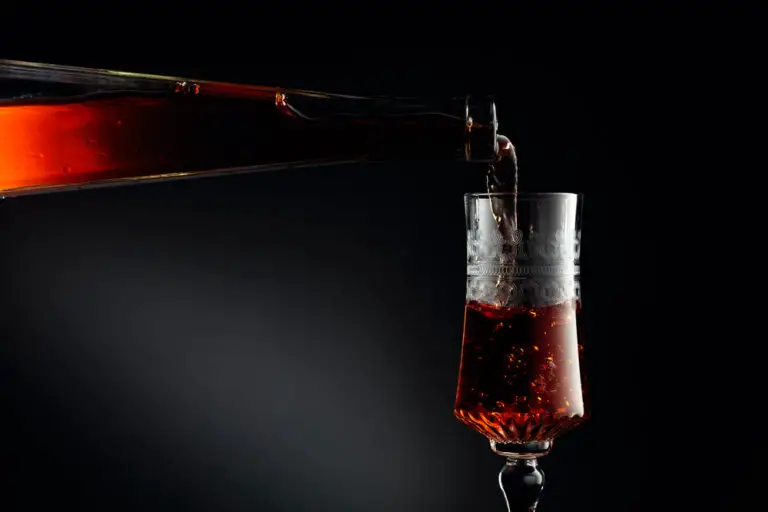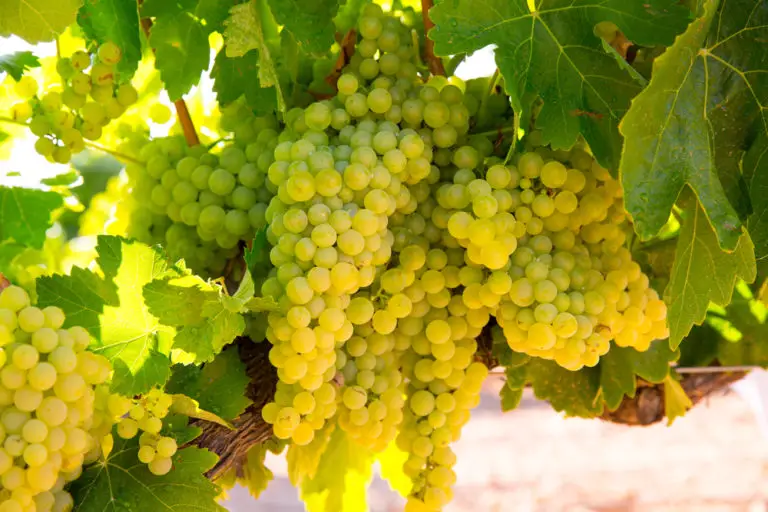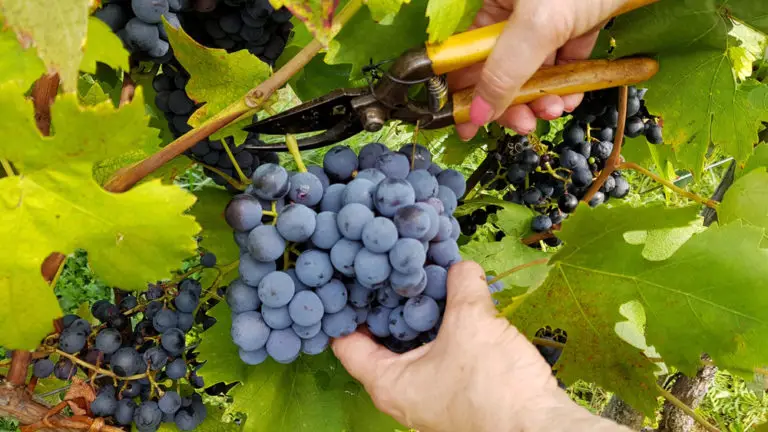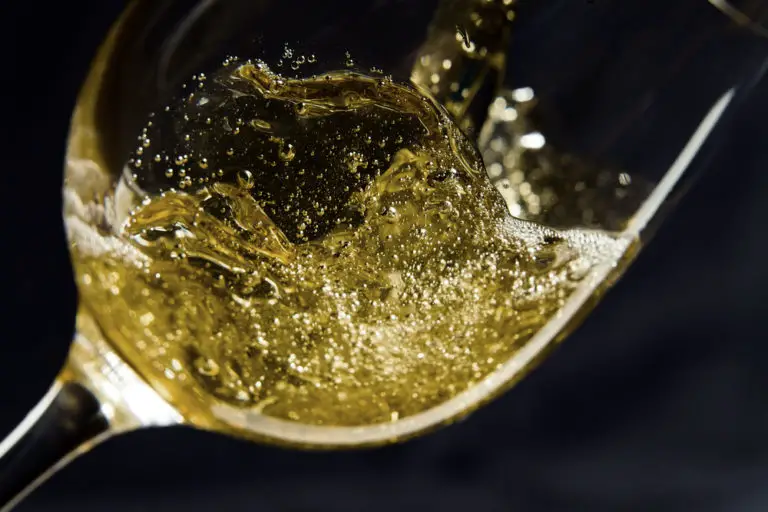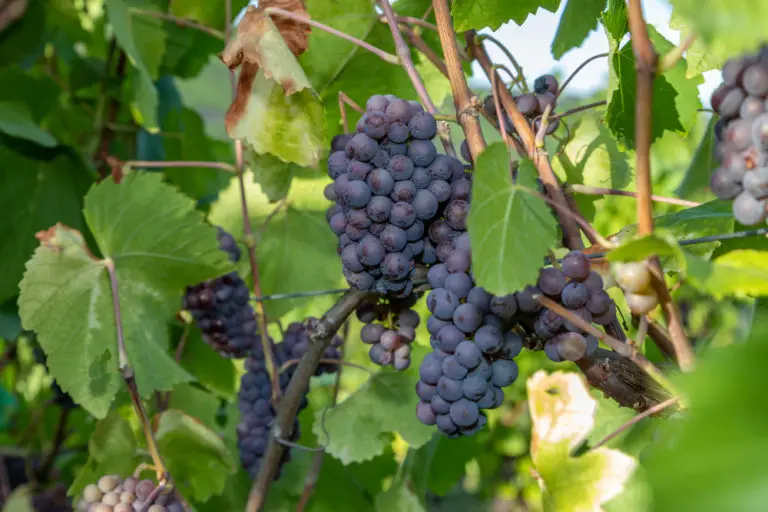Rose Wine for Beginners (Everything You Need to Know)
Are you unable to answer the questions like- which rose wine do you prefer- dry or sweet? Medium or full? Spanish, French, or Portuguese?
If yes, then this article is perfect for you. It will help you in understanding this wine and all the stuff around it.
- What is Rose Wine?
- Rose Wine Characteristics
- Types of Rose Wines
- Styles of Rose Wines
- Rose Wine’s Ageability
- How Should Rose Wine Be Served?
- Countries Known for Rose Wines
- How is Rose Wine Made?
- History of Rose Wine
What is Rose Wine?
To select the best rose wines for yourself, you must understand the basics of rose wine. Unlike red and white wine, the rose is not specific to any variety of grapes, but it is a genre. The production is similar to other red wines, but the fermentation time with grape skin is shortened. This reduced skin contact gives rose wine its pink color.
Rose wine can be made from red grapes cultivated from any region. It has been famous in France for centuries and has recently started to gain popularity in the United States and is also very famous in Italy (known as Rosato) and in Spain (rosado).
As a beginner to rose wine 101, you must know that people often believe that darker rose wines would be better. But that is a misconception associated with a lighter taste. Light color reflects the method of production, the type of grape, and the duration for which the skin was in contact with the juice. Though, the color change can mean a different flavor pellet.
Rose Wine Characteristics
There is no standardized rose wine flavor or characteristic. It varies in qualities and flavors like any other white or red wine. The color can range from copper-gold to pale salmon, raspberry red shades, and strawberry pink.
The style spans from bone-dry and crisp to fruity. Some of the common rose wine characteristics are citrus, red fruit, and spice. It can also have herbaceous, savory characters like green capsicum, celery, and olive, and pretty floral notes, such as violet, rose petal, and hibiscus.
Generally, this wine tends to have a few tannins because of its limited contact with stems and skins. Thus, even dry wines will have a sweeter taste as compared to their red equal.
The most common methods used for its productions are the direct press, maceration, saignée, Vin Gris, decoloring, and blending (mixing red wine with white wine until the desired result is achieved).
The levels of this wine are generally moderate and generally lie between 11 and 13 percent.
Types of Rose Wines
With the recent popularity, the array of pink wine ranges in the alcohol shops have increased. Knowing the types of rose wines available in the market is just another rose wine basics that you must know. Here is a list of the best quality rose wine along with their description:
Light Rosé
This category of rose wine usually is full-bodied and has well-balanced fruity aromas of strawberries and melon. They have lower alcohol contents and are comparatively lighter in color. People often drink light rose wines in summers as it is thirst-quenching, pleasant to drink, and very refreshing.
Pinot Noir
Known as the diva of the grape runway, Pinot Noir is fruity in taste. These rose wine grapes are intolerant of extreme weather conditions, but people call this wine sexy. It is highly acidic and has soft and subtle aromas of strawberries, raspberries, watermelons, crabapple, and wet stone. This elegant wine is generally crisp, cool, and dry.
Provencal Rosé
Provence is a region in France where this rose wine is made. The grapes used are Cinsault, Mourvèdre, Grenache and Syrah. This wine is dry and light, having the fruity aromas of watermelon, strawberry, and salt. It is best paired with raw shellfish, goat cheese, and light vegetable salads.
Portuguese Rosé
Made from the grapes of the Douro Valley in Northern Portugal, these wines range from off-dry to medium sweet and are aromatic, having plenty of white spice notes and floral perfumes of apple, strawberry, and cranberry. It pairs well with simple salads, sausages, and seafood.
Sangiovese Rosé
Originally from Italy, Sangiovese Rose is now grown across the world. It produces a flavourful rose with the notes of red fruit and is complimented by light spices. You can pair it with white meats like chicken, salads, Thai curry, Italian favorites like Caprese salad and prosciutto.
Light, Medium, Floral Rosé
This flavor profile of light, medium, and floral rose wine generally has an orange tone and is a few shades darker than the light rose. It is commonly associated with rose petals, cherry, and herbals. This category of rose wine is often paired up with grilled meats like pork, lamb, or shellfish.
Spanish Rose
Having a much deeper color than French Rosé wines, Spanish Rose or rosado is a very dry Rose wine. Grenache, Cinsault, Syrah are the grapes that are primarily used for making this wine. It has flavors of orange zest, tart berries, and stony minerals, and is best paired with foods like Herb sausages, BBQ brisket.
Sparkling Rose
This bubbly, fresh, and medium dry rose wine makes a cool drink. Primarily produced by using Chardonnay and Pinot Noir from Argentina and Italy, the aroma of sparkling wine is raspberry and rose. It is best paired with risotto and chicken.
Bobal Rosé
The name “bobal” is derived from “bovale”, a Latin word that refers to the shape of a bull’s head. Red (black) grape varieties from Valencia and Spain are used to make Bobal roses. It is dry and has fruity strawberry flavors. It is best enjoyed with cheeses and roasted vegetables.
Montepulciano
Montepulciano rosé is a wine from the Abruzzo region of Italy. It is full-bodied, having a deep ruby color, and has a similar fruit flavor and spices to a European mulled wine. Additionally, it has notes of clove, cinnamon, and dried fruits. You can enjoy this wine with salty cheeses and tomato-based sauces.
Medium, Full and Round Rosé
These wines are much more robust and weightier. Roses like Bordeaux Rosé and Navarro are mostly made from Merlot grapes. These wines have extra intensity and flavors that make it ideal to be paired with more intense flavors like garlic, anchovy, and slightly acidic dishes like citrus and tomatoes.
Spanish Navarro
Strongly associated with northern Spanish, Navarro is a high-quality red wine that is crisp and fruit-driven. It is characterized as fruity with strong notes of raspberry, strawberry, and cranberry. This dry wine is easy-going, dry, and fresh that complements heartier meals.
Bordeaux Rosé
Grown in the Bordeaux of France, this wine is made using Cabernet Franc, Merlot, Carménère, Cabernet Sauvignon and Petit Verdot. It is a very dry wine, having a fruity flavor of gooseberry, grapefruit, and strawberry. It pairs up best with grilled fish, chicken, and fresh greens.
Mourvèdre
Made in Washington, Spain, southern France, California, Southern Australia, and South Africa, Mourvèdre is a pale coral rose. It is fuller-bodied than most rose wines. While the rose wine production is generally short, Mourvèdre is an exception and can be aged for up to 10 years. It has initial floral notes of rose and violet, that change to smoke, cherry, meat, and red plum flavors.
Cabernet d’Anjou
This rosewood wine from France has high fruity notes of strawberries, redcurrants, roses, and fruit drops. It has a persistent aroma of citrus fruit and grenadine. This smooth and rounded wine refreshes the finish with a tangy taste. It is versatile enough to be served with savory and sweet dishes, from aperitif to dessert.
Full, Rich and Savory Rosé
This category of wine is nearly red-colored and darker rose wine with flavors of bell pepper, black pepper, and berry jams. It is rich in aromas, high in alcohol, and low in acid. It is generally served with foods like grilled ribeye, BBQ-sauced foods, and pizzas.
Cabernet Rosé
It is a full-dry wine that showcases what the previous vintage year had to offer. It offers a wide array of tropical flavors and aromas, and you can instantly feel notes of papaya, subtle citrus, and candied watermelon on the nose and palate. It pairs well with grilled or fried fish, barbecued vegetable skewers, semi-soft cheese, and olive appetizers.
Syrah Rosé
Syrah Rose is typically produced by using the ‘Saignée Method’. It has a deep color of ruby and notes of strawberry, green olive, peach skin, and cherry. It is famous for its funkiness and is really bold. It is best served above fridge temperature and can be enjoyed with pepperoni pizza or a bowl of chili.
Cabernet Sauvignon Rose
Made from the Cabernet Sauvignon grapes, this rose wine has a deep ruby-red color with red wine-like flavors of cherry sauce, green bell pepper, black currant, and pepper spice. These wines are not aged in oak and thus, have heightened acidity. It is best served chilled.
Tempranillo Rose
This wine is currently becoming popular in the Rioja region and other parts of Spain. It has a pale pink hue and herbaceous notes of watermelon, strawberry, green peppercorn, and meaty notes like a fried chicken. Sometimes, this wine is blended up with Graciano and Grenache to add floral notes.
Styles of Rose Wines
Like anything in wine, there is a whole range of different varieties, from anjou to travel style and blush style to pink bubbly.
Anjou Style
Rosé d’Anjou is the French appellation located in the Anjou district of the Loire Valley. The wines are mostly made from their native Grolleau grapes but can also be made from other varieties like Gamay, Cabernet Sauvignon, Malbec, Cabernet Franc, and Pineau d’Aunis. They are slightly sweet rose wine and have the perfect balance of acidity, alcohol, and sugar.
Tavel Style
This famous rose wine comes from Tavel, a French wine region, on the sloping bank of Rhone. This wine is also famously known as the ”The King of Roses”. They have a complex aroma of summer fruits with hints of spice. Seafood pasta, herb sausages, cold fish started, and a variety of cheese pairs well with the tavel style wine.
Blush Style
Wine made using dark-skinned grapes having the least skin contact for color and then fermented without the skin are known as blush wines. It has a fruit-forward, jammy flavor and a sweet pink color. Wines like medium-bodied Spanish blush wines, dry French rosés, and sweet Italian dessert wines are blush-style wines.
Pink Bubbly
Pink bubbly is basically a sparkling rose wine. It is produced across Europe and is very popular because of its bubbly style. These wines are generally more expensive than the standard wines and can range from under £10 up to £100s. It is generally made to cater to people who prefer sweeter / fruitier wines.
Rose Wine’s Ageability
As this is a Rose wine for beginners, it is necessary to understand the process of ageability. Aging or cellaring a wine refers to the duration you decide to store the wine in a cool, dark place after purchasing it.
Most people believe that wines taste well when they are allowed to age for a few years. But the truth is that only 1% of all the wine produced in the world is meant to be aged. So, rose wines should not be aged for long and are best enjoyed within two years of their vintage date. The fresh fruity flavor of the wine tends to fade away with aging.
Since these wines are made with minimal concentration, tannins, and acidity, they do not have to evolve much as their taste will gradually become innocuous. Of course, there are some exceptions, and only a handful of these wines get better with age.
How Should Rose Wine Be Served?
Wine or any drink must be served at the right temperature, in their dedicated glass, and with the right food. Preferences should of course be taken into consideration, but it is necessary to know the right way of serving rose wine.
Stemware
Since rose wine is a category of its own, they are also served in their own set of glasses. A rosé wine should be served in a glass with a diamond-like shape, a façade that increases the alcohol’s evaporation rate, thus intensifying the aromas. You can find glasses of rose wine online or in the shops around you.
Temperature
The best way is to keep the wine in the fridge immediately after purchasing it. But, if you would like to drink rose wine on the same day, you should either leave it in the refrigerator for several hours or place it in the freezer for 30 minutes. After opening, you can simply let it sweat on the table, as the wine’s character and aroma change as the temperature rises.
Food Pairings
Not all red rose wines can be served with the same food items. It is difficult to accumulate a single list that would work well with all the rose wine, but food like Salmon, duck, lamb served pink, soft cheeses, Charcuterie, and Chicken or niçoise salad go well with most of these wines.
Countries Known for Rose Wines
The rose wine production takes place across the world and from a wide variety of grapes. Spain, Italy, the USA, France, Germany, and South Africa are the top countries making rose wine. You can also find some excellent wines from other countries like the UK, Portugal, and Argentina.
French Roses
It is impossible to talk about rose wine without France or Provence coming to mind. It is known as the world’s most prestigious region for roses. Wines from here tend to have a lighter color, are highly acidic, and are perfect for summers. The most popular varieties from this location are Cinsault, Grenache, Vermentino (Rolle), Syrah, Mourvedre, and Carignan.
Italy Roses
Rose is made throughout Italy with flavors and styles depending on the local climate and traditional varieties. The regions of Friuli-Venezia Giulia, Veneto, Trentino-Alto Adige, Lombardy and Veneto are most famous for producing this wine. They produce a variety of wines from dry to full-bodied and flavored.
Germany Roses
This region of Europe ranks 3rd worldwide in planting Pinot Noir. It produces a delicious dry rose with crisp acidity and red fruit flavors. 60% of this pink wine types production in Germany takes place along the river Rhine in the state of Rhineland-Palatinate. Totally, there are 13 regions in Germany, and wine from every region is unique.
Austria Roses
Austria has a wide range of rose wines to offer. Some of them are delicate, and the others are strong. Sankt Laurent, Blauer Wildbacher (for Schilcher), Blaufränkisch and a few Zweigelt are some of the popular varieties from this region. Wine from this region has a distinctive and unique balance of fruit, body, and freshness.
Switzerland Roses
Switzerland has been producing rose wines since the mid 19th century. Wines produced here have an infinite range of shades, from very pale to intense ones. There is a very high chance that you will find one to your liking. The Neuchâtel Oeil-de-perdrix and the Dôle Blanche from Valais are two most famous wines of this region.
Spanish Rosado
From easy-drinking fruity numbers to serious wines for pairing with food and even long-aged, oaked Rosados, Spanish Rosado has a wide range of rose wines to offer. These are made of the most Spanish grapes out there: Garnacha, Tempranillo, and Viura. Spanish Rosado is best enjoyed with Tapas.
Portugal Roses
Port is the most famous Portuguese wine made from grapes in the Douro Valley in northern Portugal. Other popular wines from this region include Tinto Cao, Tinta Barroca and Touriga Nacional, all from the Tinta Nacional region. Madeira is yet another well-known fortified wine known to age for more than one hundred years and sometimes, even for two centuries.
How is Rose Wine Made?
By now you must have already understood by the rose wine description that it is made only from red wine grapes but is essentially produced like white wine. After the grape harvesting process is completed, essential steps like short maceration, fermentation, pressing, maturation, fining, and bottling takes place. The following approaches are commonly used for making rose wine.
Maceration Method (Skin Contact)
In this method, the red wine grapes are allowed to rest in the juice for a decided duration, and later the entire batch of juice is converted into rose wine. The wine made from this method is usually darker in color with rich flavors. This method is mostly used in the Provence and Languedoc-Roussillon regions of France.
Vin Gris Method
The wines produced from this method are very light rose wines made from red grapes. The grapes are pressed, but the juice is not left in contact with darker grape skins for even a short time. It results in the extraction of mostly clear juice. Blanc de Noirs champagne is an example of vin gris.
Saignee Method
It is one of the most common ways to make rose wine. It starts with red wine grapes that are harvested for making red wines. It is basically a by-product of red wine production. In this, the winemakers bleed off some juice in the early stage and put it aside to make the specific rose wine.
Decoloring
This method uses natural absorbents like activated carbon to drain the color from red wine. Distilled carbon-like wood is used in this winemaking process that removes acidity and varying amounts of flavors and generally produces a lesser quality Rosé than any before listed method. It is the reason decoloring is rarely used.
Blending
The blending process is only used for producing Rosé Champagne, rather than the still drink. Top-level certified French wine does not allow this method for the production of rose wine. Outside Europe, blending white and red wine is considered a new method and is not usually used anywhere.
History of Rose Wine
The history of rose wine tracks back to the 1600s, where the Phocaeans took grapevines from Greece to Massalia (now Marseille) in France, where the pink wine was made and soon became famous in the Mediterranean.
Romans made it more popular by spreading it through their well-connected trade networks. It is one of the reasons the South of France is called the home of rose wine till now.
During this era, the concentrated wine was diluted as it was considered civilized. Pure wines were reserved for barbarians and savages due to their taste and strongness. The rose wine we have today is much lighter than the ancient rose wine.
In the mid-1900s, bulk production of rose wine hit the market through brands like Lancers & Mateus. Even though it was successful initially, the brands tarnish the reputation of rose wine as it was of cheap and low quality.
In the 2000s, it started becoming famous again and now is renowned across the world.
FAQ
Is Rose wine sweet or dry?
It can be sweet or dry but is mostly dry. Old World rosés are typically very dry, while wines from New World are usually fruitier and sweeter.
What kind of wine is Rose?
The wine is made using red wine grapes and following the same process but having lesser skin contact. This reduction gives it a pink hue and lighter flavor.
Why is Rose wine so popular?
Because it is not too heavy as read and not too light as wine. Rose wine can be paired with anything, and it is highly versatile.
Do you refrigerate rose wine?
Rose wine of any kind should be served at about 46 – 57 degrees. It could slightly vary from wine to wine, depending on their flavor and pellets.
How do you drink rose wine?
The best way to serve rose wine is in a medium-sized glass. It lets the fresh and fruity characteristics gather at the top.
What is the difference between Rose and white wine?
Just like white wine, rose wine is made with limited skin contact but from red grapes. White wine is mostly made using green grapes.
Is Rose wine a blend?
Yes, rose wine is a blended wine made from different varieties of grapes. Though, it can be made using either a single variety of grape.
What do you eat Rose wine with?
It is difficult to make a single list, but most rose wines taste good with chicken or niçoise salad, salmon, duck, charcuterie, and soft cheeses.
What does Rose wine taste like?
The flavor profile resembles that of a light red wine but with crisper and brighter tasting notes. Rose wine taste is often described as red fruits (cherry, strawberry, raspberry) Flowers.
What color should rose wine be?
It can range from peach to nearly red. It can change Depending on the rose wine ingredients and the preparation. Generally, lighter rosés are bright and crisp darker rosés have more fruit and body.
Is rose a red wine?
No, a rose is not red wine. It is a kind of wine made with red wine grapes but having lesser contact with the skin during fermentation.
Is pink Moscato rose?
No, they are actually two different beverages. Pink Moscato is a blend of red and white grapes while rosé gets its color through a process called maceration.

